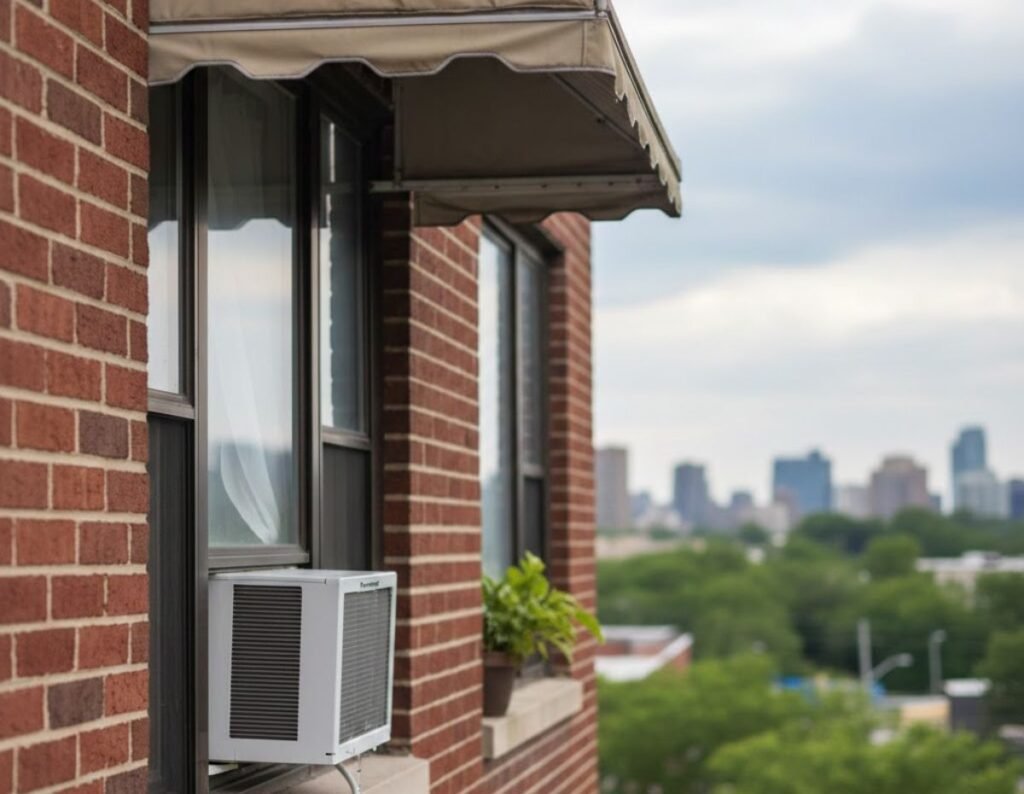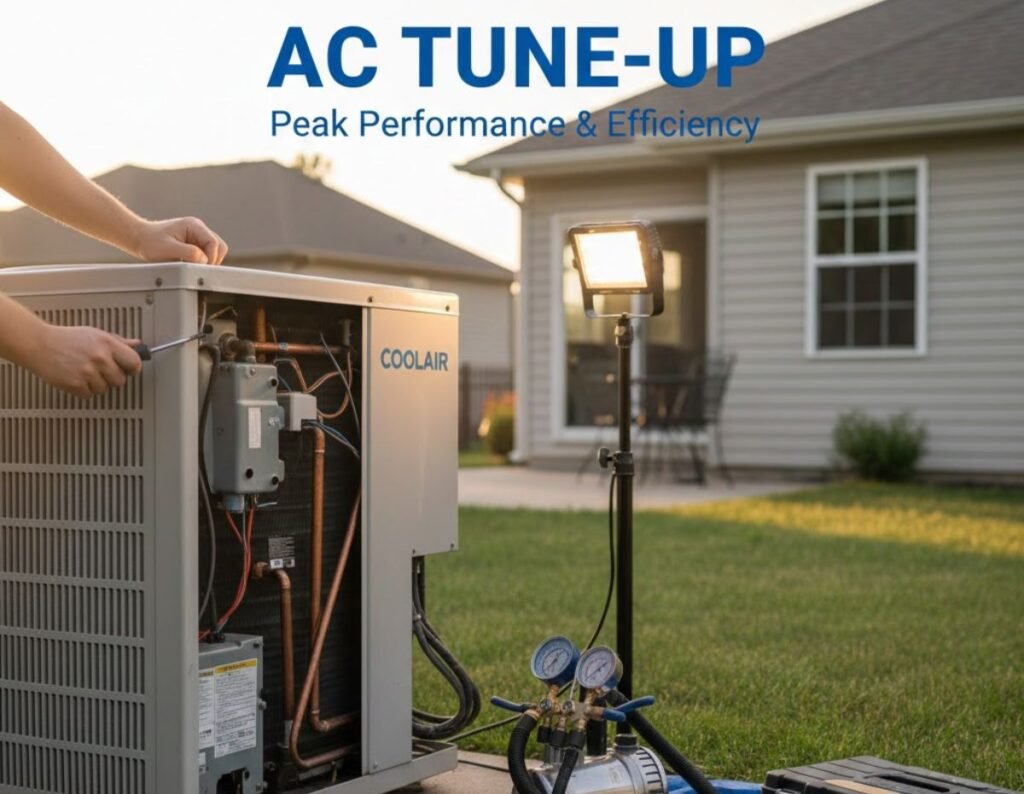Window air conditioners have been a go-to cooling solution for decades and for good reason. They’re simple, compact, budget-friendly, and easy to install compared to more complex systems like split ACs or central air. If you’re looking for a cooling option that doesn’t require drilling, heavy maintenance, or a big investment, a window AC often becomes the most practical choice.
People choose window units because they strike the perfect balance between performance and convenience. They cool individual rooms effectively, making them ideal for bedrooms, offices, studio apartments, and rental homes. You don’t need to be a professional technician to operate or maintain one, and many modern models now come packed with smart features such as Wi-Fi control, energy saver modes, and voice assistant compatibility.
At the same time, buying a window air conditioner isn’t as simple as picking the first unit you find. Cooling capacity, energy efficiency, installation requirements, noise levels, and long-term operating costs all play a role. Understanding these factors before buying helps you make a smarter decision—one that keeps you comfortable without inflating your electricity bills.

In this detailed guide, we’ll break down everything you need to know about window air conditioners from how they work, how to choose the right one, and how to maintain them, to comparing them with other types of ACs. If you’re in the market for a new cooling solution, this article will help you walk away confident and well-informed.
How Window Air Conditioners Work
Window air conditioners operate on a simple but effective principle: they pull warm air from inside your room, remove the heat from it, and release cool air back into the room. Meanwhile, the removed heat is expelled outside. This dual-sided operation is what makes window ACs different from portable ACs, which require external venting, or split ACs, which separate the indoor and outdoor components.
At the center of every window AC is a refrigeration cycle. This involves a refrigerant a chemical fluid that continuously changes between liquid and gas. As it evaporates, it absorbs heat from your room. As it condenses, it releases that heat outdoors. It’s the same basic system used in refrigerators but on a bigger scale.
The unit also contains fans, coils, a thermostat, and a compressor. The compressor is the heart of the system, pumping refrigerant and maintaining pressure. The evaporator coil inside the room absorbs heat while the condenser coil outside releases it. This constant cycle creates a cooling effect that can significantly lower room temperature within minutes.
Types of Window Air Conditioners
Standard Window AC
This is the most common and affordable type. It fits into most horizontal sliding windows and offers basic cooling for small to medium spaces. Standard models may not be packed with advanced features, but they’re reliable, long-lasting, and energy-efficient enough for everyday use.
Casement Window AC
Casement or vertical window ACs are designed for narrow, vertically sliding windows. They tend to be taller and slimmer than standard units. While they are slightly more expensive, they’re essential for homes with nontraditional window designs.
Smart Window AC
Smart models offer modern convenience. They can connect to Wi-Fi, allowing users to control the temperature from their smartphone, set schedules, or operate the AC using voice assistants like Alexa or Google Assistant. These units typically provide better energy optimization, making them ideal for today’s tech-savvy households.
READ MORE: Central Air Conditioner
Benefits of Using a Window Air Conditioner

Window air conditioners come with an impressive list of advantages that make them a top choice for many homeowners and renters. First, they are significantly more affordable than split systems, both in terms of upfront cost and installation. Since they require no major modifications to your home, they’re ideal for temporary living spaces or apartments where permanent changes aren’t allowed.
Second, window ACs are energy-efficient when cooling small areas. Instead of cooling an entire home, they focus on a single room—saving electricity. Many modern units come equipped with eco modes and timers that reduce unnecessary power consumption.
Another major benefit is the ease of maintenance. With a simple filter to clean and minimal components to worry about, you can keep your unit running smoothly with minimal effort. Replacement parts are cheap and readily available.
Finally, window ACs are incredibly compact. They don’t take up floor space and don’t clutter your room with hoses or external units. For anyone seeking convenience, budget-friendly cooling, and reliable performance, a window AC is a smart choice.
Choosing the Right Window AC Size
Selecting the right AC size is critical. A unit with too little cooling power will struggle to cool your room, while an oversized unit will cycle on and off too quickly, wasting energy and failing to dehumidify the air properly.
The cooling capacity of an air conditioner is measured in BTUs (British Thermal Units). Here’s a quick guide:
| Room Size | Recommended BTU |
| Up to 150 sq ft | 5,000–6,000 BTU |
| 150–250 sq ft | 6,000–8,000 BTU |
| 250–350 sq ft | 8,000–10,000 BTU |
| 350–450 sq ft | 10,000–12,000 BTU |
| 450–550 sq ft | 12,000–14,000 BTU |
Factors like ceiling height, sunlight exposure, number of occupants, and room insulation also play a part.
Energy Efficiency Ratings You Should Know
When shopping for a window AC, understanding energy ratings is a must. The two most important ratings are:
- EER (Energy Efficiency Ratio) – Measures energy efficiency at peak cooling time.
- CEER (Combined Energy Efficiency Ratio) – A newer, more accurate measurement that accounts for standby power usage.
A higher rating means greater efficiency and lower electricity bills.
Energy Star-certified ACs must meet strict requirements and can save you up to 15% more energy than standard units.
Key Features to Look For
Modern window ACs come packed with useful features. Some of the most valuable include:
- Remote Control: Allows easy operation from anywhere in the room.
- Sleep Mode: Adjusts temperature gradually to save energy overnight.
- Adjustable Louvers: Helps direct airflow where it’s needed most.
- Noise Control: Some models operate as low as 40–50 dB, ideal for bedrooms.
- Washable Filters: Reduce maintenance costs.
The more features a unit has, the more convenient and efficient your cooling experience will be.
READ MORE: Portable AC Unit
Installation Tips for Maximum Efficiency
Correct installation makes a big difference in how well your AC performs. Start by measuring your window to ensure the unit fits securely. You’ll want a stable, level foundation so the AC can drain properly. Use the mounting brackets included with the unit for safety.
Next, make sure the window is sealed tightly. Gaps around the AC allow warm air and pollutants to enter. Using weatherstripping or foam insulation helps improve cooling efficiency.
Finally, consider the angle of the AC. It should tilt slightly outward so condensation drains outside rather than leaking into your room.
Maintenance Tips to Keep Your Unit Running Smoothly
Regular maintenance can significantly extend the life of your AC. The most important step is cleaning the filter. Dust buildup restricts airflow, forcing the AC to work harder. Cleaning the filter every two to four weeks keeps it running efficiently.
The coils also require attention. Dirty coils reduce cooling performance. Light vacuuming or gentle brushing can help remove dirt.
At least once a year, give the unit a deeper clean—check for mold, clear debris from the drain pan, and ensure the fan blades are dust-free.
Common Problems and Troubleshooting Tips
AC Not Cooling Properly
This may be due to a dirty filter, blocked vents, or incorrect BTU size. Cleaning or repositioning can help.
Water Leaking Indoors
Usually caused by improper installation or clogged drainage. Ensure the AC is tilted outward.
AC Making Noise
Loose screws, fan obstruction, or internal debris are common causes. Tightening and cleaning fix most issues.
READ MORE: Mini Split Air Conditioners
Window AC vs Split AC: Which Is Better?
Window ACs are more affordable, easier to install, and perfect for small rooms. Split ACs, however, offer quieter performance, more advanced features, and faster cooling.
Your choice depends on your budget, room size, and long-term needs.
Best Brands for Window Air Conditioners
Some of the most reliable global brands include:
- LG
- Whirlpool
- GE
- Frigidaire
- Haier
These brands are known for durability, efficiency, and strong after-sales support.
Cost of Buying and Running a Window AC
A typical window AC costs anywhere from $150 to $500 depending on size and features. Operating costs vary based on wattage, usage time, and local electricity rates. Energy-efficient models may have a higher upfront cost but save significantly over time.
Environmental Impact and Eco-Friendly Options
Modern window ACs use eco-friendly refrigerants like R32 and R410A, which cause less environmental harm than older gases. Energy-efficient models reduce carbon footprint by lowering power consumption.
Future Trends in Window Air Conditioner Technology
Smart controls, inverter technology, quieter operation, and eco-friendly materials are shaping the next generation of window air conditioners. Expect improvements in energy efficiency and intelligent automation that adapts cooling to user behavior.
Conclusion
A window air conditioner is one of the most practical cooling solutions for homes, apartments, and offices. Whether you’re looking for affordability, ease of installation, or reliable cooling performance, a window AC delivers all of that and more. By understanding how they work, what features to look for, and how to choose the right size, you can make an informed decision that keeps your room cool while saving you money.
FAQs
1. How long does a window AC usually last?
Most units last 8–12 years with proper maintenance.
2. Can I install a window AC myself?
Yes, most units are designed for DIY installation.
3. Does a window AC use a lot of electricity?
It depends on BTU and energy rating, but they typically use less power than split ACs.
4. Can a window AC cool multiple rooms?
No, they are designed for single-room cooling.
5. How often should I clean the AC filter?
Every 2–4 weeks for best performance.

